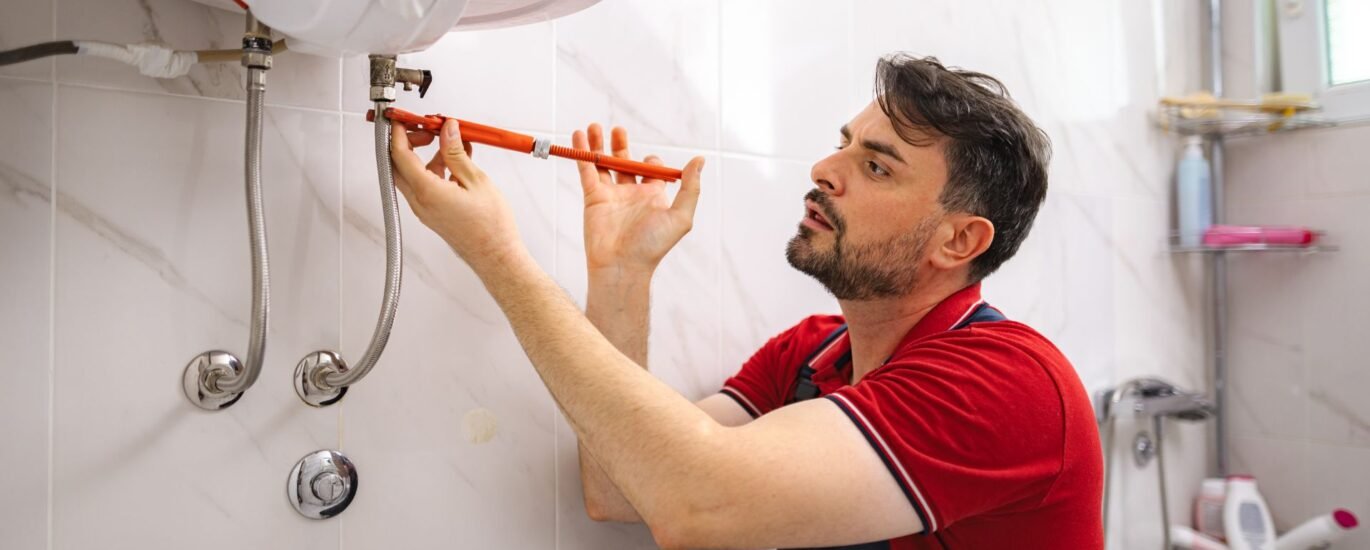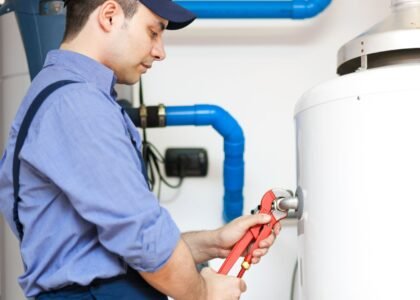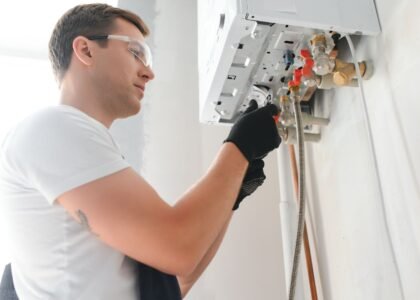Introduction
Your hot water system is essential to comfort at home — morning showers, dishwashing, laundry all depend on it. But when your unit fails or you decide it’s time for an upgrade, water heater installation is a major decision. In Chino, CA, you want an installer who understands local requirements, climate, and what brands/models work best.
In this article, you’ll learn:
- When to replace vs repair a water heater
- Types of water heaters for Chino homes
- The installation process step by step
- Common pitfalls to avoid
- How to choose the right capacity
- How this links to ongoing service and maintenance
Let’s dive in.
When Should You Replace Instead of Repair?
Before jumping into installing a new unit, you need to assess whether repair or replacement is more cost-effective.
Signs that replacement may be better:
- The current unit is more than 8–10 years old
- You hear rumbling or knocking sounds (often sediment buildup)
- The tank has leaks or corrosion around the base
- You get insufficient hot water or long wait times
- Rusty or discolored water coming from hot taps
If your system meets one or more of these criteria, installation is the better choice. Otherwise, a repair or servicing might extend its life for a few more years.
Linking this thought to forward planning: when you’re ready to proceed, check out our detailed service page on expert water heater installation in Chino, CA.
Types of Water Heaters Suitable for Chino Homes
Chino’s climate and household demands influence which systems make sense. Here are the common categories:
| Type | Pros | Considerations |
|---|---|---|
| Storage tank (gas or electric) | Lower upfront cost, familiar design | Takes up space; standby heat loss |
| Tankless (on-demand) | Unlimited hot water, energy efficient | Higher installation cost, may need upgraded gas line or venting |
| Heat pump / hybrid | Very efficient | Works best in moderate climates; may need auxiliary heating |
| Solar (with backup) | Renewable energy | High cost, needs proper orientation and backup |
For many homes in Chino, a traditional tank or tankless system is the practical choice. If energy savings and long-term cost matter, hybrid or solar options may be considered as investments.
Choosing the Right Capacity and Model
Selecting capacity incorrectly is one of the most common errors in installations.
Factors to consider:
- Number of occupants / peak demand
A household of four will need more hot water at once than a single occupant. - Simultaneous usage
If showers, washing, and dishwashing happen concurrently, you need extra margin. - Fuel type and source
Does your home already have a gas line or rely on electricity? That affects your choice. - Efficiency ratings
Look for high Energy Factor (EF) or Uniform Energy Factor (UEF) ratings. - Space constraints
Tankless or hybrid units may save space.
Rule of thumb tanks:
- 30–40 gallons: 1–2 people
- 40–50 gallons: 3 people
- 50–60 gallons: 4–5 people
- 75+ gallons: large families or high use
For tankless, use the flow rate (GPM) needed for your peak usage (e.g. two showers + washing machine).
Step-by-Step Water Heater Installation Process
Below is a typical workflow for installing a new unit. Local codes or installer preferences may vary.
- Inspection & removal of old unit
Safely shut off water, gas or electricity, and drain the existing water heater. - Site preparation
Check venting, gas lines, electrical wiring, and water lines. Ensure proper clearance and seismic strapping if required locally. - Mounting / positioning
Position the new heater, level it, and secure it to prevent movement. - Connections
- Water (cold inlet, hot outlet)
- Pressure relief valve and discharge piping
- Gas line (with proper sizing) or electrical wiring
- Venting / exhaust for gas units
- Drain pan if needed
- Testing & first fill
Fill the tank slowly, check for leaks, purge air. Ignite pilot or power it up. - Quality checks & final adjustments
Confirm temperature settings, pressure, venting airflow, and safe operation. - Commissioning & customer orientation
Show the homeowner how to operate and maintain the unit.
Once installed, you’ll want to maintain it to maximize lifespan—see Blog 2 for ongoing care.
If you’re ready to schedule your water heater installation in Chino today, head to our Contact Us page.
Common Pitfalls and Mistakes to Avoid
When installing a new water heater, avoid these pitfalls:
- Undersizing the unit – leads to insufficient hot water
- Incorrect vent sizing or poor vent path (for gas units)
- Improper gas line sizing – pressure drop issues
- Neglecting a drip pan or drain line
- Poor location choice – lack of service clearance
- Skipping anti-scale or water treatment in hard water areas
- No expansion tank or check valve where needed
Partnering with an installer familiar with Chino’s conditions (temperature, codes, water quality) is critical.
Benefits of a Quality Installation
A properly done installation will:
- Improve energy efficiency
- Reduce operating costs
- Provide more consistent hot water
- Extend system life
- Minimize risk of leaks or failures
- Ensure safety (venting, gas, pressure)
All of these advantages come from getting the installation right the first time.
Connecting to Maintenance & Service
Installation is just the beginning. To protect your investment:
- Schedule annual inspections
- Flush sediment every 6–12 months
- Test pressure relief valve
- Monitor for corrosion or leak signs
- For tankless systems, descale periodically
We’ll cover all of that in Blog 2. And when you need trained support, you can revisit our expert installation page or go to Contact Us to request service.
Conclusion
Water heater installation in Chino, CA is a mix of technical know-how, right-sizing, and code compliance. With smart planning and a reliable installer, you can enjoy uninterrupted hot water for years.
When you’re ready to move forward, check out our expert water heater installation in Chino, CA page and submit your request via Contact Us.



